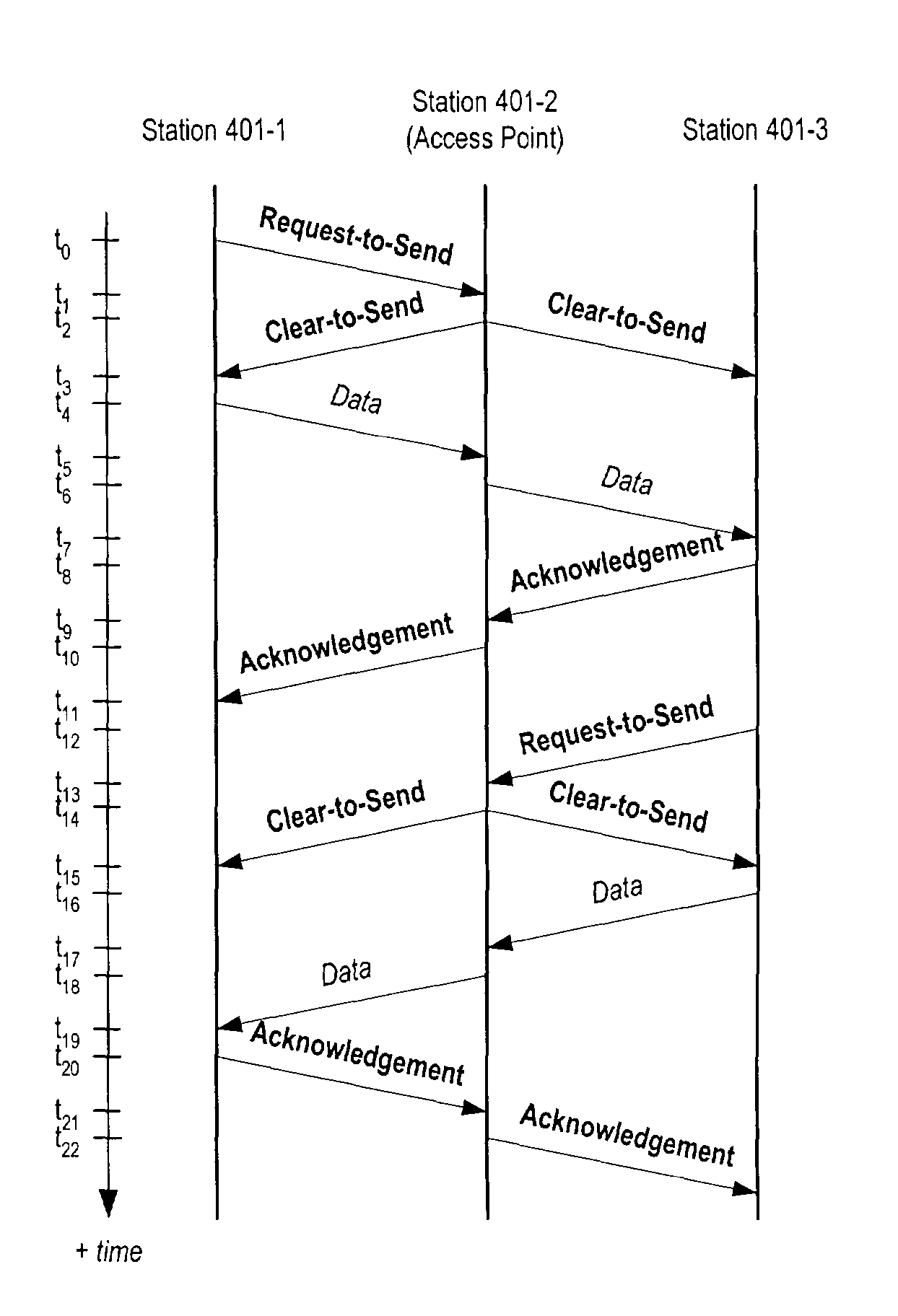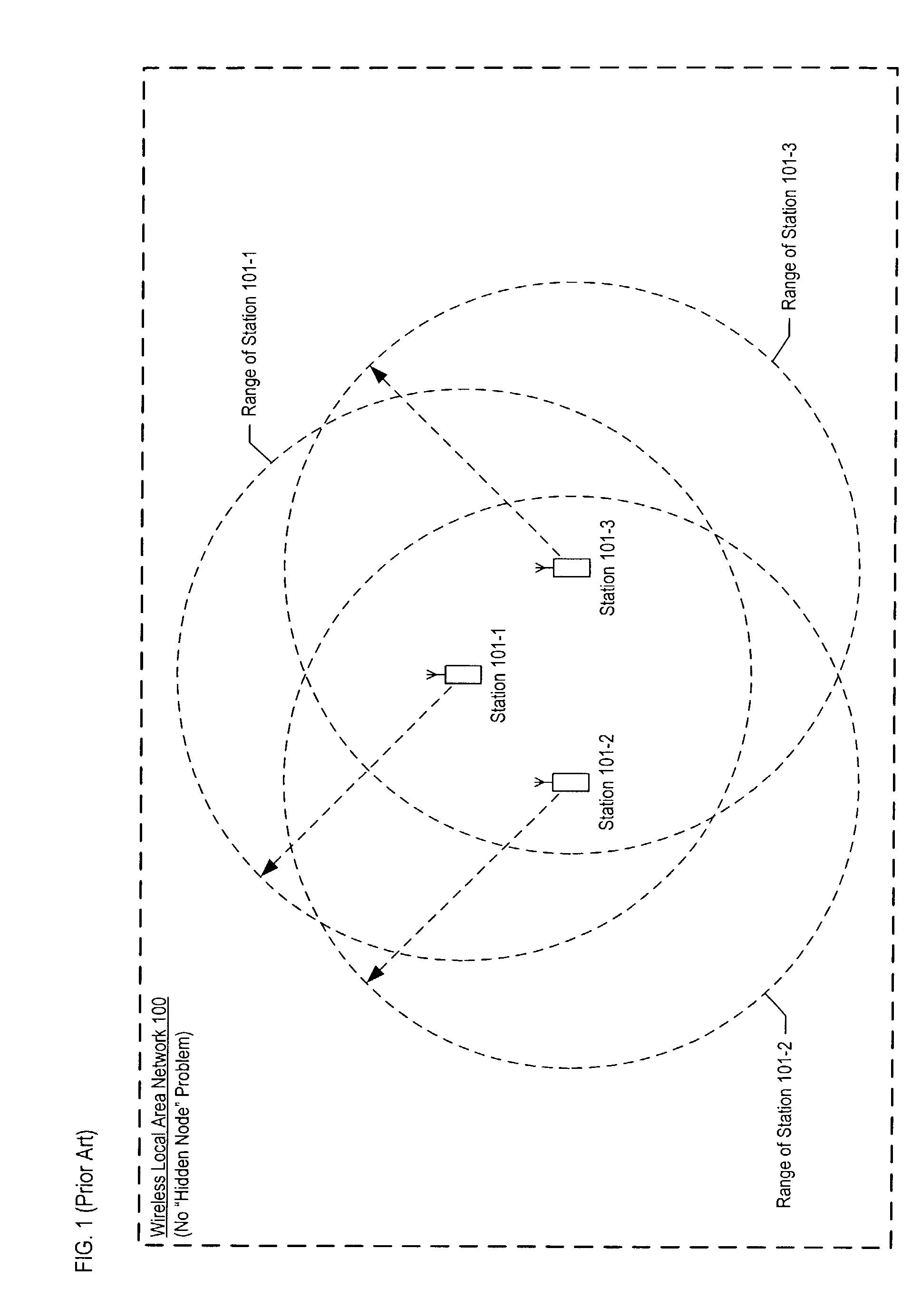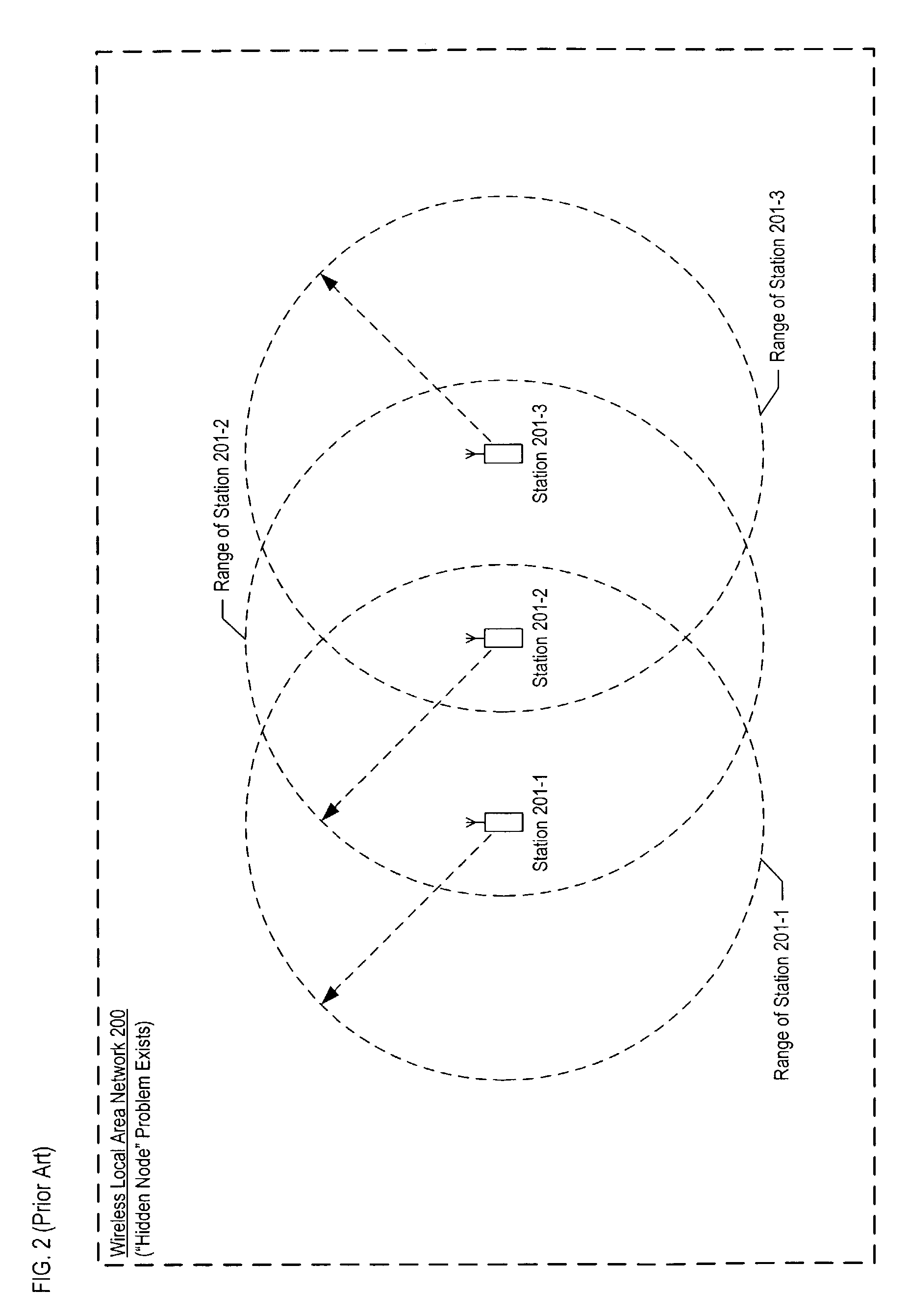Transmit power management in shared-communications channel networks
a technology of shared communication channel and power management, applied in the field of telecoms, can solve the problems of increasing the likelihood of hidden nodes, and achieve the effect of conserving energy
- Summary
- Abstract
- Description
- Claims
- Application Information
AI Technical Summary
Benefits of technology
Problems solved by technology
Method used
Image
Examples
Embodiment Construction
[0046]FIG. 4 depicts a schematic diagram of local area network 400 in accordance with the illustrative embodiments of the present invention. Local area network 400 comprises a plurality of stations, station 401-1 through 401-3, that communicate wirelessly via a shared-communications channel. In accordance with the illustrative embodiment, all of the stations in the network operate in compliance with the IEEE 802.11 standard.
[0047]FIG. 5 depicts a block diagram of the salient components of station 401-i, for i=1 to 4, in accordance with illustrative embodiments of the present invention. Station 401-i is one station in an IEEE 802.11-compliant wireless local area network, and, therefore all of the Frames are transmitted by all of the stations in the network in compliance with the IEEE 802.11 standard. It will be clear to those skilled in the art, however, after reading this disclosure, how to make and use embodiments of the present invention that operate in a non-IEEE 802.11 compliant...
PUM
 Login to View More
Login to View More Abstract
Description
Claims
Application Information
 Login to View More
Login to View More - R&D
- Intellectual Property
- Life Sciences
- Materials
- Tech Scout
- Unparalleled Data Quality
- Higher Quality Content
- 60% Fewer Hallucinations
Browse by: Latest US Patents, China's latest patents, Technical Efficacy Thesaurus, Application Domain, Technology Topic, Popular Technical Reports.
© 2025 PatSnap. All rights reserved.Legal|Privacy policy|Modern Slavery Act Transparency Statement|Sitemap|About US| Contact US: help@patsnap.com



